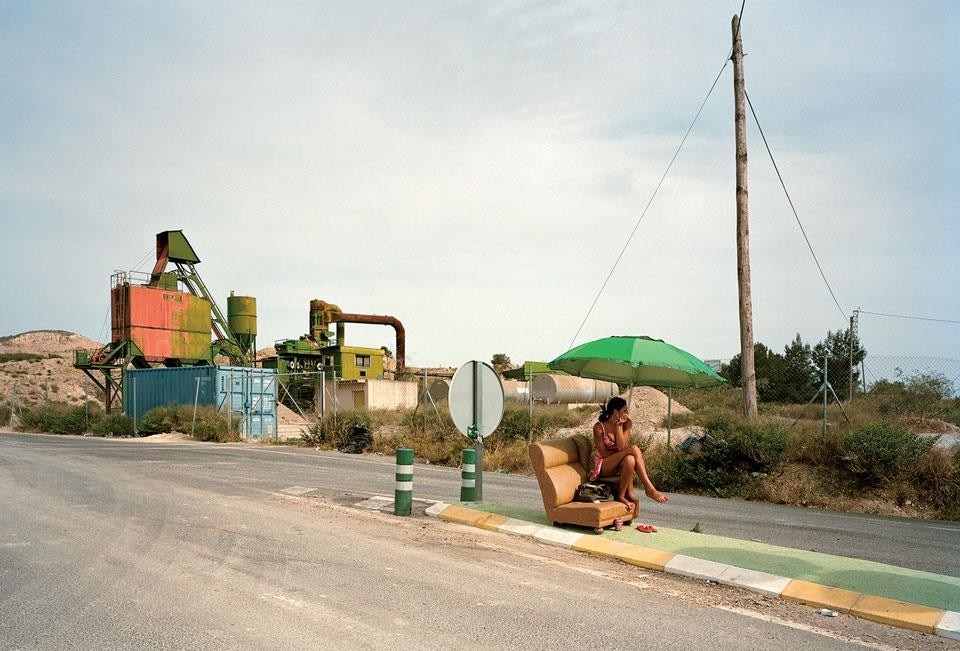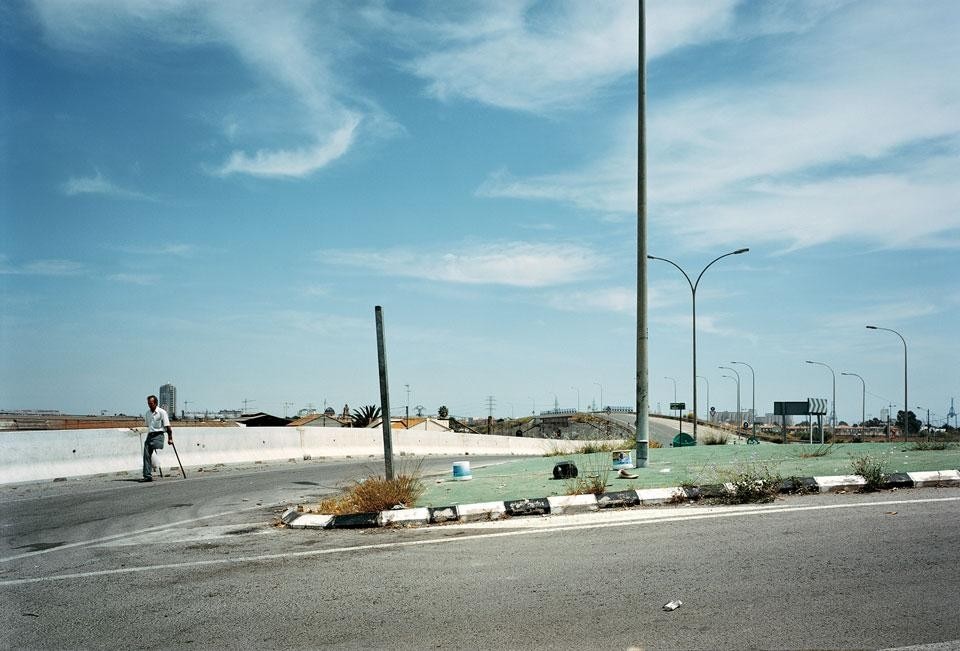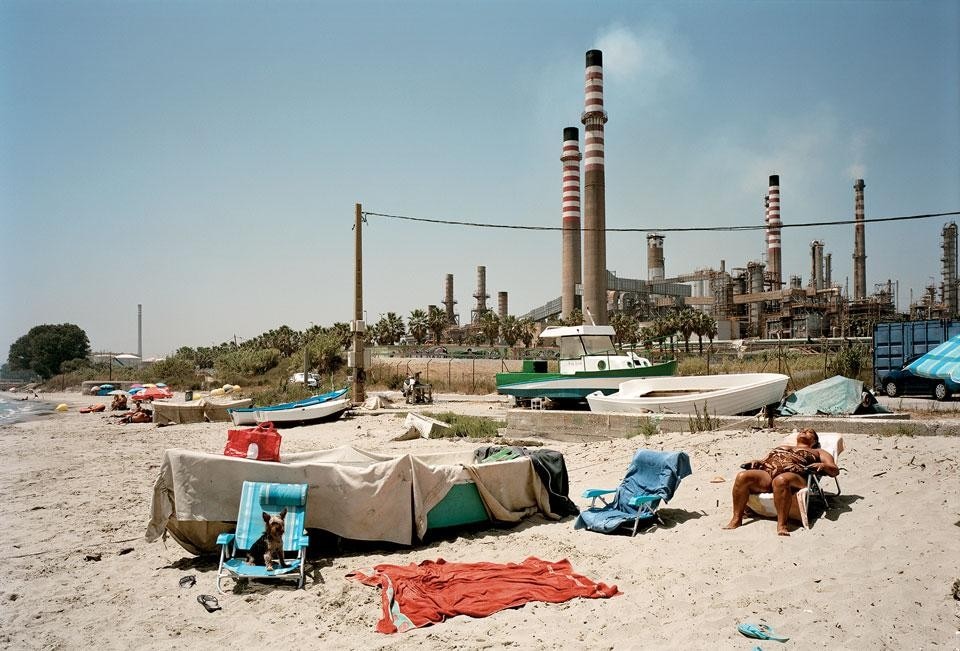It is precisely these sites of leisure in post-industrial society that interest Txema Salvans, whose shots of them bring out all their surreal banality and sharpen the funny sense of strangeness they engender. He does this by means of two rhetorical devices. First, by maintaining a viewpoint distanced enough to prioritize the scene and its surrounding environment over the individual subjects and their expressions, and secondly, and most importantly, through the mechanism of ellipsis.
Most of the pictures were taken on the beach or near the sea, and the sea is therefore what justifies the presence of people sunbathing, fishing or playing on the sand. And yet the sea is always invisible, because Salvans positions himself between the water and the characters, reversing the direction of his gaze. As a result, what the camera shows us is the degraded background that the characters want to turn their backs on. To turn one's back on something is to ignore it, even to pretend that it does not exist.

The paradox is that we viewers-of-the-photographs are denied the chance to see what the actors-in-the-photographs want to see, while what is rubbed in our eyes instead is what they do not want to see. It is Salvans who manages the instances of that dialectic and in doing so demonstrates, as Nietzsche held, that there are no facts, only interpretations. Joan Fontcuberta, visual artist, photography lecturer
This text was originally published in the catalogue of the 3rd GD4PhotoArt young artist competition, on the theme of "Photography meets Industry", promoted by GD and Fondazione Isabella Seràgnoli.




